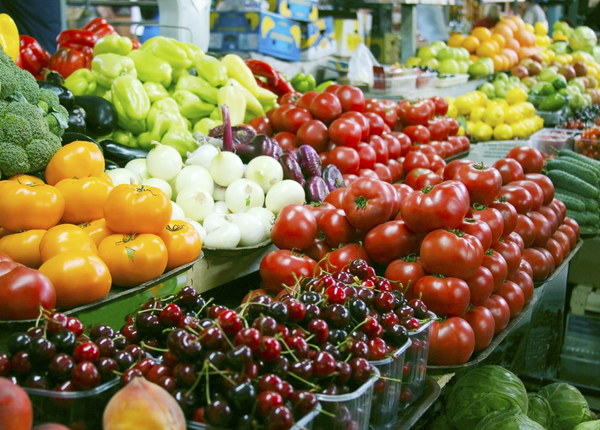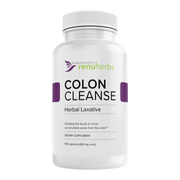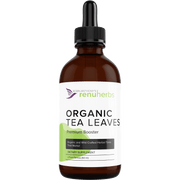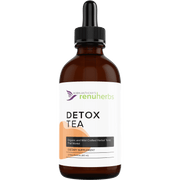Beat the Bulge: The Whole Foods Diet for Weight Loss

A whole foods diet might just be the holy grail for managing your weight without feeling like your dieting. I feel I should brief you, like other means of weight loss, results don’t happen overnight. However, the whole foods diet is unlike others in one very significant way, it’s sustainable long-term.
When people think about weight loss, two things come to mind -- diet and exercise. Whether it’s the newest fad diet or the latest fitness craze, it’s safe to say we’ve all tried more then we’d like to admit.
The majority of these diets are phased out for good reason: Not many people can stick with strict limits long-term.
Luckily, shedding unwanted body fat doesn’t have to mean eating mouse sized meals or putting in hours at the gym. The whole foods diet is an excellent weight loss solution that can help you meet your body’s nutritional needs without feeling restricted.
The Lowdown on a Whole Foods Diet for Weight Loss
You’re probably wondering what it means to follow a whole foods diet for weight loss, right?
Simply put, it’s a diet focused on eating real foods in their most natural state. As you fill up on nutrient-dense foods, you’ll have less room for processed junk. Win-win!
Foods to Eat

By eating a whole foods diet, you are nourishing your body with nutrient-dense food providing it with key vitamins and minerals. Food is fuel for our bodies, and just like you’d never consider pouring a bag of sugar in your gas tank, it’s important to treat your body the same way.
Meals should consist of a mix of complex carbs, lean protein and healthy fats. This ensures meals are blood sugar balancing, which helps with binge eating, late-night cravings, imbalanced hormones and additional weight gain (the exact things we want to avoid).
Foods that get the green light on the whole foods diet include:
- Fruits and vegetables
- Meat, poultry and seafood (grass-fed/wild caught)
- Eggs (organic, free-range)
- Nuts, Seeds and beans
- Whole grains like wild rice, brown rice, quinoa and barley
- Milk, yogurt and cheese (minimal)
Foods to Avoid
By process of elimination, you’ve probably figured out what foods you should be avoiding. It’s important to keep in mind when you are following a whole foods diet for weight loss, that you steer clear of anything that has been processed or altered.
This includes foods with added sugars, pre-packaged “ready-to-go” meals, and refined carbohydrates.
In terms of dairy, it comes down to personal preference. While some dairy products are on the no-go list, such as ice cream and processed cheese, regular cheese and yogurt are minimally processed in comparison. Just watch out for those sneaky added sugars.
Other foods that get the red light on the whole foods diet include:
- Deli and processed meats
- Baked goods
- Candy and other junk food
- Frozen meals
- White rice, bread and pasta
Key Players in The Whole Foods Diet
Fiber is your friend when it comes to weight loss. When you consume a diet consisting of primarily whole foods, you’re getting your daily dose of both soluble and insoluble fiber.
When shedding the pounds, fiber is key to your success. Fiber not only helps keep you full longer, but it also helps to balance blood sugar levels and reduce sugar cravings.
Additionally, fiber plays a vital role in gut health. Since our body is unable to digest and break down certain forms of fiber, it passes through the digestive system, helping to clear out waste, toxins and fat as well as excess hormones and cholesterol.
Consuming a whole foods diet will get you closer to the recommended daily intake of fiber, which is around 30-40 grams a day.
A healthy gut also helps keep the immune system in tip-top shape. How? Believe it or not, around 70% of our immune system is situated in our gut, so focusing on digestive health is a must! Learn about 5 herbs that can start boosting your immune system.
Impacting Your Health
More often than not, people that follow a whole foods diet are healthier than those that don’t. as you focus on eating whole foods, you are naturally avoiding foods that contribute to overeating, weight gain, inflammation and gut-related issues.
Most items on the whole foods “avoid” list have been tied to health problems including hormonal imbalance, adrenal fatigue, leaky gut syndrome, candida overgrowth, thyroid issues and autoimmune diseases. These factors can also contribute weight gain or make it more difficult to lose weight.
When it comes to improving your health, you might be shocked at the difference a whole foods diet can make. Whole foods help to cleanse the body naturally, which is why eating a diet rich in antioxidants can help the body fight free radicals and oxidative stress – both of which can lead to disease.
Navigating the Grocery Store - How to Shop for Whole Foods
The easiest way to avoid these foods is knowing what to look out for when grocery shopping. If you don’t keep the no-no foods in your house at all, you’ll be set for success.
Knowing how to easily navigate the grocery store can be huge, not only for your weight loss success but also for your wallet.
Start by making yourself a grocery list made up of the different ingredients in the meals you plan on preparing, along with snack items that will keep you going between meals. Have a list prepared and stick to it.
Another thing to note – never go to the grocery store hungry! That’s a sure-fire way to let temptation take over during your grocery store trip. Yet another way to sabotage your weight loss endeavors!
Once inside, you’ll want to focus on shopping the outside perimeter of the store and very few inner isles. Grocery stores are typically set up where your produce, meat, seafood and eggs can be found in the outer isles. That means most temptation foods, like chips and cookies, are located in the center isles of the store. The only exception to this is sometimes frozen fruit, whole grains, beans, nuts, seeds, as well as your spices and herbs which are sometimes in center isles.
Eating in season when it comes to your produce can also be a huge money saver when following a whole foods diet. Find out which fruits and veggies are in season and aim to shop locally for those. Often, they are richer in flavor and fresher. Plus, it’s always nice to support local businesses.
Final Thoughts
Following a whole foods diet doesn’t have to be hard. Just remember, your focus is on eating foods found in their most natural state and avoiding items that contain preservatives, additives and artificial ingredients.
This will go a long way in helping you shed those excess pounds but also aid in the prevention of illness and disease long term.
Your health and waistline will thank you for it!














